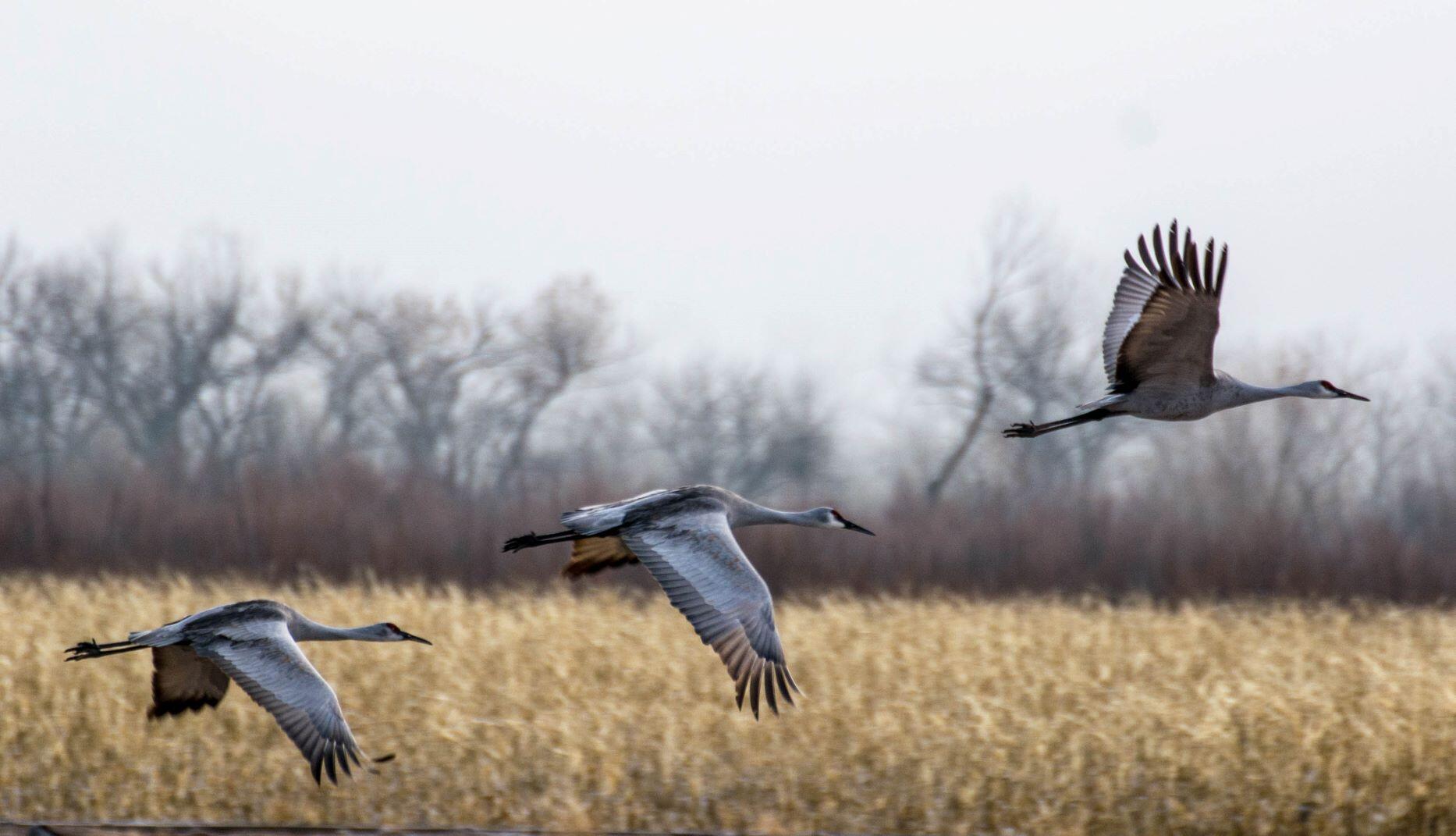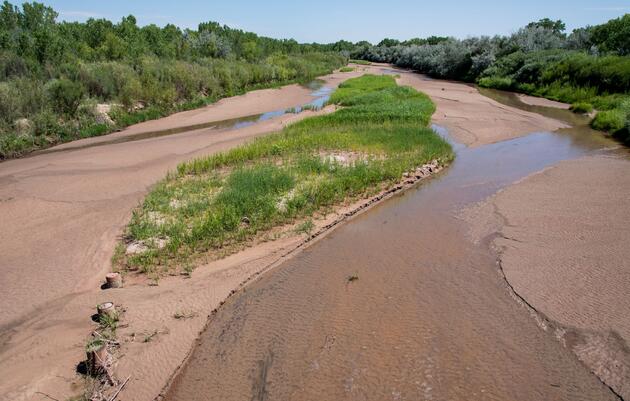It’s fall on the Rio Grande, and as the smell of roasting chiles begins to fade and the cottonwood leaves start showing their first hints of gold, we turn our eyes and ears skyward to welcome the Rocky Mountain population of Sandhill Cranes back to their winter home.
While these birds can be seen scattered along the river from Bernalillo to Socorro, the greatest concentrations are found at Sevilleta and Bosque Del Apache National Wildlife Refuges and the state-owned Ladd S. Gordon Waterfowl Complex. These gatherings are a must-see event for any resident or visitor to the Land of Enchantment.
However, while sharing this place with these birds may feel like a birthright to many New Mexicans, the future existence of the Sandhill Crane, along with many other birds, is in peril.
A new study by the National Audubon Society shows that two thirds of North America’s birds are at risk of extinction from climate change under an increasingly likely 3.0°C global warming scenario.
Across New Mexico from 2010 to the end of the century, average temperatures during the warmest months are expected to increase approximately 10°F. Average annual precipitation is expected to decline by approximately 1.25 inches, a significant amount in a state that receives less than 11 inches per year in many areas. These changes will alter plant and insect communities; influence availability of food, forage, water, and shelter for birds; and cause extreme weather volatility. Over time, how people use land and water, for urban living or agriculture, will also change, bringing about inevitable impacts on New Mexico's communities, economy, and bird populations.
The Sandhill Crane is threatened not only by changes here in New Mexico but also in their breeding grounds in Idaho, Montana, Utah, Colorado and Wyoming where they are likely to lose more than 90% of their current range.
And the cranes aren’t the only birds that are at risk. Based on Audubon’s science, more than 150 species of New Mexico birds are highly vulnerable to extinction from the climate crisis including Broad-tailed Hummingbirds, Mountain Bluebirds, and Western Tanagers.
But this science also gives us reasons to be hopeful. While Audubon’s analysis shows that nearly 400 bird species are at risk under a 3.0°C warming scenario, that risk is reduced for more than 75% of those species if we take action now and keep warming to 1.5°C. For our cranes, this would reduce the potential loss of breeding habitat from about 90% to 60% -- a still significant but much smaller threat.
We already know what we need to do to reduce global warming. First, we must collectively reduce our own personal carbon footprint by making energy savings in our homes and in our transportation a priority. But acting individually will not be enough. To truly combat climate change at the scale needed we must enact economy-wide solutions that address every sector.
In New Mexico we took a major step in this direction by passing the Energy Transition Act (ETA) in the 2019 legislative session. But our work cannot stop with the ETA. Current efforts to address methane emissions in the four corners and Permian Basin must provide meaningful regulations that capture and curtail the release of this potent greenhouse gas by the oil and gas industry.
We must do all we can to encourage the household deployment of solar power through tax incentives and other means while also supporting “community solar” policies that expand access to this renewable source of energy.
We need each and every New Mexican who cares about the natural world to take action. Ask your elected officials to be climate and conservation champions by supporting ETA implementation, regulating methane emissions, and enacting community solar legislation.
The birds are telling us it’s time to take action on climate.






